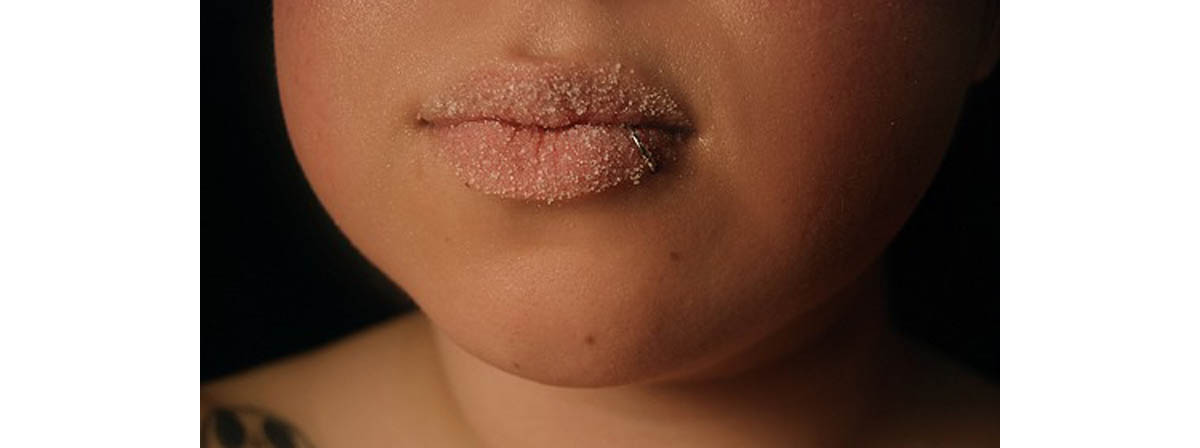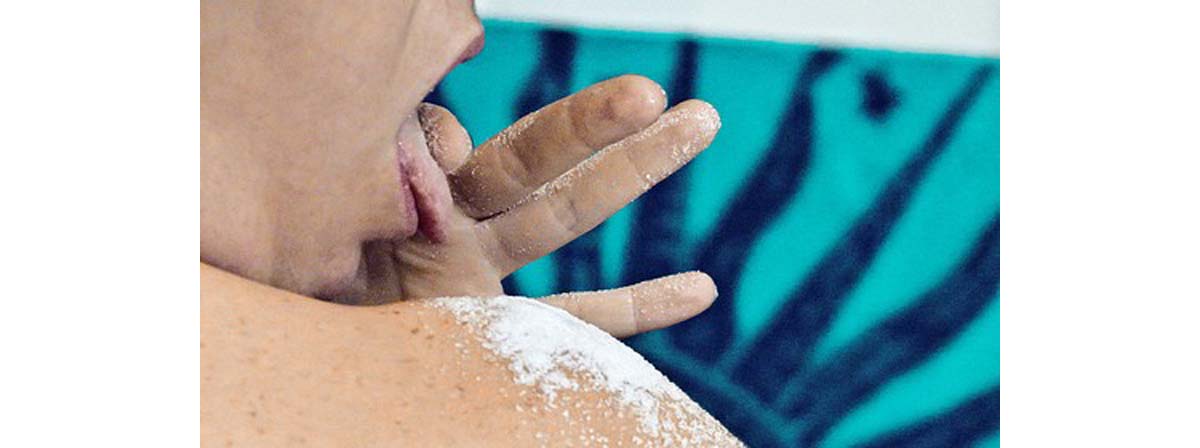If you are plugged into the mainstream mass media in the United States, you couldn't have missed the news surrounding the publicity of the idea that sugar causes skin to age more rapidly.

In her book The Sugar Detox, a dermatologist named Patricia Farris and her co-author, the beauty expert Brooke Alpert, tell their readers that sugar is the cause of crankiness, food addiction, "brain fog," and a variety of skin problems ranging from acne to wrinkles. But is that really how the process works?
There's indeed good evidence that sugar can be "addicting" — not quite in the same sense as cocaine, alcohol, gambling, or cigarettes, but certainly in the sense that eating sugar will make you want to eat more sugar.
Why is that?
Chomping down a sugary dessert or breakfast food leads to a quick surge of glucose in the bloodstream. The pancreas releases its stored insulin to keep all that excess sugar from literally catching fire in a process called auto-oxidation. This protects the linings and DNA of cells found over almost all of the body (except the brain and the ovaries in women).
Because the process that triggers the blood sugar-lowering hormone insulin also releases the blood-sugar raising hormone glucagon, every time your body experiences a surge of sugar in the bloodstream, it both stores sugar in fat cells and releases sugar from the liver. At some point the liver can't keep up with the constant demand to release sugar (to make sure that insulin doesn't work "too well") and you don't have energy when you need it.
Probably not.
Human skin ages in part due to a process called glycation. Constant exposure to high levels of sugar in the bloodstream lead to the formation of a "caramel coating" on certain proteins on the surfaces of nerves, of blood vessels, and of the connective tissue underlying the skin. Sugar attaches itself to the proteins that give the skin its suppleness and "give," well-known proteins called collagen and elastin.
The skin loses its elastic ability to "bounce back" when it has to move with muscle motion, with the result that it will eventially form sags, bags, and wrinkles. But is this process inevitable? And is there some way to reverse it years of being a sugarholic are beginning to show up in your face?
Reversing the Skin-Aging Effects of Excess Sugar Consumption
Dr. Farris and co-author Alpert have one fact very right: It's best not to consume added sugar. They even offer a simple sugar detox, starting with three days of avoiding any sugar at all, which can set their readers on a lifetime path to better health. But what if you just can't break your sugar habit? Or what you have other priorities in your life right now, and you really don't fancy the idea of going on a total sugar detox? Here are some things you can do to keep your skin — and your whole body, to boot — healthier while you get your dietary habits under better control.

- If you just have to eat sugar, at least eat less of it. It's a lot easier for your pancreas to get you the insulin it needs to keep your blood sugar levels normal if you eat just one bagel instead of two, or just one donut instead of the whole box. It's the sugar that your pancreas can't regulate that causes the actual damage to your skin and other organs in your body. Eating sugar may set you down the path of insulin resistance and pre-diabetes, but you don't get the glycation that causes wrinkles, sags, bags, and age spots until your blood sugar levels start getting too high on a regular basis.
- Take R-lipoic acid supplements and treat your skin with alpha-lipoic acid skin creams. Lipoic acid is one of the body's premier antioxidants. It counteracts and reverses much of the damage done by the process of glycation even after blood sugar levels get out of control. R-lipoic acid is the preferred form of the nutritional supplement. The "R-" form of lipoic acid is the form that cells can actually use, although the "alpha-lipoic" acid you get in cheaper brands still lowers antioxidant levels in the bloodstream, and is better than nothing. Alpha-lipoic acid in skin care creams reverses glycation damage in the topmost layers of the skin, but remember to keep the bottle or tube tightly closed when you aren't using it, since alpha-lipoic acid will also fight free radicals of oxygen in the air.
- Eat sweets with meals, not between them. Restating the reality that it is always best just not to eat sweets at all, if you have to have your candy or donuts or cake or pie or ice cream, eat it with a meal. Why? Eating a mixture of foods, especially adding sour, acidic foods (such as vinegar in salad dressing or pickles) to a meal lowers the glycemic index of all the foods you eat. Your digestive tract has to "sort out" the various components of your meal, so sugar takes longer to get into your bloodstream, and your pancreas has more time to release enough insulin at the right time to prevent the surge in blood sugars that causes the glycation that potentially damages your skin.
What about eating fruit? Fruit contains natural sugars, and the main sugar in fruit is fructose, and we all know high-fructose corn syrup is bad, so eating fruit would damage skin, too, right?
Not really. One thing to now about "high-fructose" corn syrup is that it is only relatively high in fructose. It just has about 10% more fructose (which is especially sweet) than glucose. It's still glucose, whether from the syrup or broken down by the body from fructose, that is the culprit. And fruit contains fibers, pectins, and nutrients that slow down the passage of sugar from food into the bloodstream.
Eating a 1-pound (454-gram) package of dried fruit might be a problem, but eating an apple a day typically isn't. In fact, fruit is healthy and packed full of vitamins, and you should never avoid it because you think it'll give you bad skin. The sugars from fruit, unless you have diabetes, enter the bloodstream so slowly that your pancreas can keep up with them.
We can't tell anyone to go out and eat Hostess Twinkies, moon pies, Hagen-Dasz, and theater-sized boxes of chocolate-coated jujube fruit. When it comes to sugar, less is better. But if you are concerned about sugar and your skin, how much sugar you consume and which foods you consume it with make all the difference.
- Gkogkolou P, Böhm M. Advanced glycation end products: Key players in skin aging? Dermatoendocrinol. 2012 Jul 1. 4(3):259-70. doi: 10.4161/derm.22028. PMID: 23467327.
- Pageon H, Zucchi H, Rousset F, Monnier VM, Asselineau D. Skin aging by glycation: lessons from the reconstructed skin model. Clin Chem Lab Med. 2013 Jun 15:1-6. doi: 10.1515/cclm-2013-0091. [Epub ahead of print] PMID: 23770560.
- Photo courtesy of Melissa Segal by Flickr : www.flickr.com/photos/frenchie1108/3374982430/
- Photo courtesy of Alessandra Raimondi by Flickr : www.flickr.com/photos/dialettica/4989872936/


Your thoughts on this